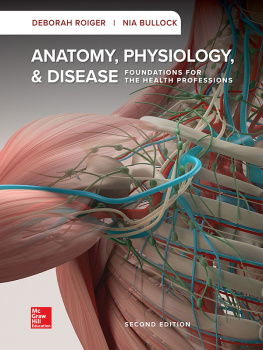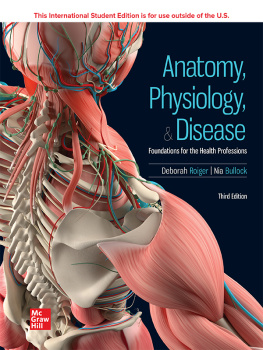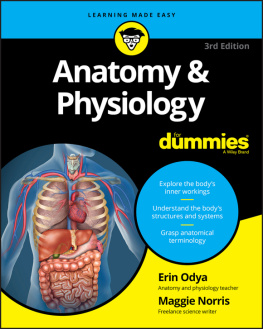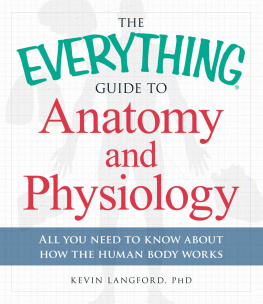Lee Ann Remington - Clinical Anatomy and Physiology of the Visual System E-Book
Here you can read online Lee Ann Remington - Clinical Anatomy and Physiology of the Visual System E-Book full text of the book (entire story) in english for free. Download pdf and epub, get meaning, cover and reviews about this ebook. year: 2021, publisher: Elsevier Health Sciences, genre: Home and family. Description of the work, (preface) as well as reviews are available. Best literature library LitArk.com created for fans of good reading and offers a wide selection of genres:
Romance novel
Science fiction
Adventure
Detective
Science
History
Home and family
Prose
Art
Politics
Computer
Non-fiction
Religion
Business
Children
Humor
Choose a favorite category and find really read worthwhile books. Enjoy immersion in the world of imagination, feel the emotions of the characters or learn something new for yourself, make an fascinating discovery.

- Book:Clinical Anatomy and Physiology of the Visual System E-Book
- Author:
- Publisher:Elsevier Health Sciences
- Genre:
- Year:2021
- Rating:5 / 5
- Favourites:Add to favourites
- Your mark:
- 100
- 1
- 2
- 3
- 4
- 5
Clinical Anatomy and Physiology of the Visual System E-Book: summary, description and annotation
We offer to read an annotation, description, summary or preface (depends on what the author of the book "Clinical Anatomy and Physiology of the Visual System E-Book" wrote himself). If you haven't found the necessary information about the book — write in the comments, we will try to find it.
Clinical Anatomy and Physiology of the Visual System E-Book — read online for free the complete book (whole text) full work
Below is the text of the book, divided by pages. System saving the place of the last page read, allows you to conveniently read the book "Clinical Anatomy and Physiology of the Visual System E-Book" online for free, without having to search again every time where you left off. Put a bookmark, and you can go to the page where you finished reading at any time.
Font size:
Interval:
Bookmark:
Thank you for your purchase. Please note that your purchase of this Elsevier eBook also includes access to an online version. Please click here (or go to http://ebooks.elsevier.com) to request an activation code and registration instructions in order to gain access to the web version.
Fourth Edition
Lee Ann Remington, OD, MS
Professor Emerita
Pacific University College of Optometry
Forest Grove, Oregon
Denise Goodwin, OD, FAAO
Professor of Optometry
Pacific University College of Optometry
Forest Grove, Oregon

3251 Riverport Lane
CLINICAL ANATOMY AND PHYSIOLOGY OF THE VISUAL SYSTEM, FOURTH EDITION
ISBN: 978-0-323-71168-5
Copyright 2022 Elsevier, Inc. All rights reserved.
No part of this publication may be reproduced or transmitted in any form or by any means, electronic or mechanical, including photocopying, recording, or any information storage and retrieval system, without permission in writing from the publisher. Details on how to seek permission, further information about the Publisher's permissions policies and our arrangements with organizations such as the Copyright Clearance Center and the Copyright Licensing Agency, can be found on our website: http://www.elsevier.com/permissions.
This book and the individual contributions contained in it are protected under copyright by the Publisher (other than as may be noted herein).
Notices
Practitioners and researchers must always rely on their own experience and knowledge in evaluating and using any information, methods, compounds or experiments described herein. Because of rapid advances in the medical sciences, in particular, independent verification of diagnoses and drug dosages should be made. To the fullest extent of the law, no responsibility is assumed by Elsevier, authors, editors or contributors for any injury and/or damage to persons or property as a matter of products liability, negligence or otherwise, or from any use or operation of any methods, products, instructions, or ideas contained in the material herein.
Previous editions copyrighted 2012, 2005, and 1998
Library of Congress Number: 2021936357
Senior Content Strategist: Kayla Wolfe
Content Development Specialist: Kristen Helm
Publishing Services Manager: Shereen Jameel
Project Manager: Aparna Venkatachalam
Design Direction: Brian Salisbury
Printed in Canada
Last digit is the print number:987654321

To Dan for his encouragement and support.
LAR
To Spencer who supports me in all my crazy endeavors, and to Bob who started me writing.
DG
Clinical Anatomy and Physiology of the Visual System was written to provide optometry, ophthalmology, and visual science students, as well as clinicians, with a single text that describes the embryology, anatomy, histology, physiology, blood supply, and innervation of the globe and ocular adnexa. The visual and pupillary pathways are covered as well. The text is fully referenced, and information gathered from historical and current literature is well documented. An overview of the visual system, as well as a short review of histology and physiology, is provided in the introductory chapter. Thereafter, detailed discussions and images help illustrate anatomy and physiology concepts related to the visual system.
Chapters are roughly arranged anatomically, starting anteriorly and moving posteriorly. describes the crystalline lens.
In our experience, students can more easily grasp the intricacies of ocular development after gaining a comprehensive understanding of the composition of the structures; therefore ocular embryology is covered in explains the extraocular muscles and describes movements that result from contraction of the muscles with the eye in various positions of gaze; an explanation of the clinical assessment of extraocular muscle function based on the anatomy is included.
The branches of the internal and the external carotid arteries that supply the globe and adnexa are identified in presents the autonomic pathways to the smooth muscles of the orbit and to the lacrimal gland. The pupillary pathway is included in this chapter, as is a discussion of the more common pupillary abnormalities and the relation between the pathway and the clinical presentation. Some of the common pharmaceutical agents and their actions and pupillary effects are covered as well. The final chapter has significant detail on the relationship between the structures of the visual pathway and neighboring structures and on the orientation of the fibers as they course through the cranium en route to the striate cortex. Examples are given of characteristic visual field defects associated with injury to various regions of the pathway.
In the format used in the text, terms and names of structures are noted in bold print when they are first described or explained. The name for a structure that is more common in usage is presented first, followed by other terms by which that structure is also known. Current nomenclature tends to use the more descriptive name rather than proper nouns when identifying structures, but that is not always the case, especially when the proper name of an individual has been linked so closely historically (e.g., Schwalbe line and Schlemm canal). When proper names are used, we have followed the example of major journals, which are phasing out the use of the possessive form of the name.
Experienced clinicians know that the knowledge of structure and function provides a good foundation for recognizing and understanding clinical situations, conditions, diseases, and treatments. For this reason, Clinical Comments are included throughout the book to emphasize common clinical problems, disease processes, or abnormalities that have a basis in anatomy or physiology.
Lee Ann Remington, OD, MS
Denise Goodwin, OD, FAAO
We have had the pleasure of interacting with many bright, engaging students while teaching at Pacific University College of Optometry. Their questions, corrections, suggestions, and enthusiasm motivate us to continually improve and update the understanding of the process we call vision. We are grateful for their kindness; they make our days richer.
We are also fortunate to work with an extraordinary group of colleagues, the faculty at Pacific, who create an enjoyable environment conducive to academic growth. We are grateful to Dean Jennifer Coyle and Dean Fraser Horn for the constant level of support they have provided and to the optometry faculty for their warm encouragement and help during this process.
Kristen Helm, our Content Development Specialist at Elsevier, championed the project and guided us with kindness and tact throughout the entire process, and for that we are grateful. Kayla Wolfe, our Content Strategist at Elsevier, competently combined the text and figures into a cohesive whole. We appreciate her thoughtful suggestions.
The visual system takes in information from the environment in the form of light and analyzes and interprets the data. This process of sight and visual perception involves a complex system of structures, each of which is designed for a specific purpose. The organization of each structure enables it to perform its intended function.
Font size:
Interval:
Bookmark:
Similar books «Clinical Anatomy and Physiology of the Visual System E-Book»
Look at similar books to Clinical Anatomy and Physiology of the Visual System E-Book. We have selected literature similar in name and meaning in the hope of providing readers with more options to find new, interesting, not yet read works.
Discussion, reviews of the book Clinical Anatomy and Physiology of the Visual System E-Book and just readers' own opinions. Leave your comments, write what you think about the work, its meaning or the main characters. Specify what exactly you liked and what you didn't like, and why you think so.









